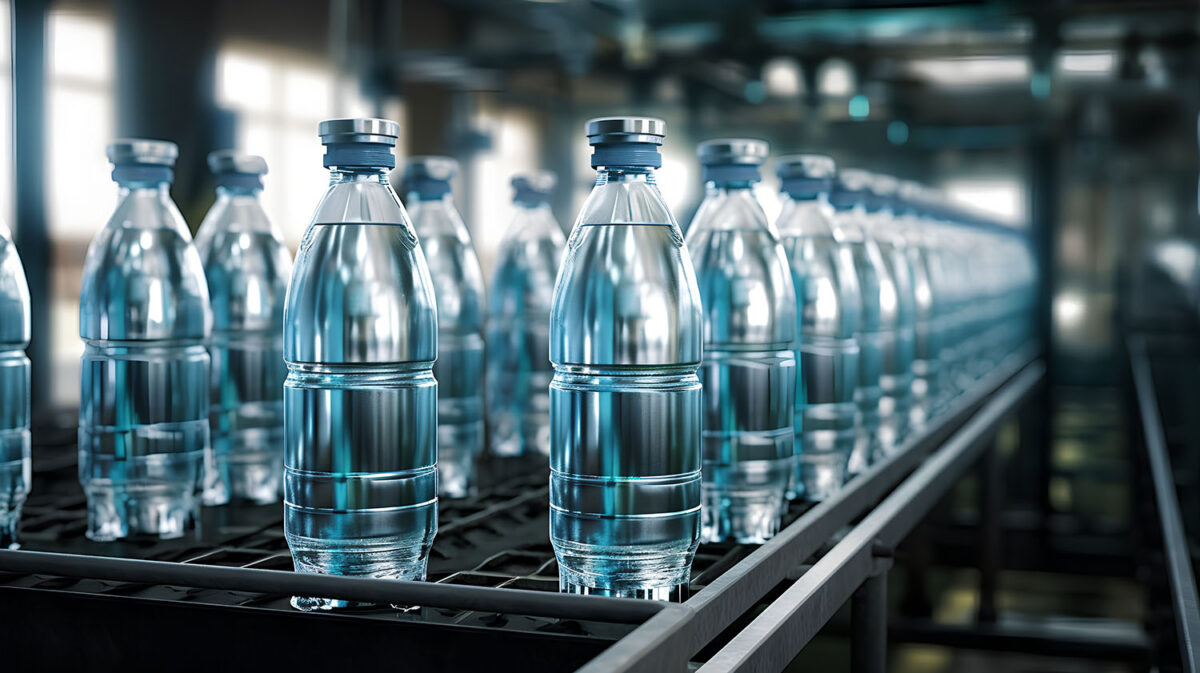The Technology Behind Food-Grade rPET

Advanced machinery that can effectively decontaminate post-consumer plastics is the key to producing rPET with exceptionally high purity. This quality is essential for FDA-approved food-grade packaging.
One significant hurdle in recycling PET is contamination. Used PET containers often contain residues of food, liquids, or other substances. Moreover, components like labels, caps, and adhesives, often made from different materials, contribute to contamination. These contaminants must be thoroughly removed to achieve high-purity recycled PET, requiring sophisticated and costly cleaning processes.
You can also read: The Fashion Industry Needs an Alternative to Recycled PET
Sorting Challenges
Sorting is a critical step in the recycling process. However, PET products often get mixed with other types of plastics, making the sorting process intricate. Variations in the color and the form of PET products further complicate the sorting process, impacting the purity of the recycled material.
PET recycling is not just a matter of breaking down and reforming materials; it’s a chemical process that can lead to degradation.
During recycling, PET undergoes thermal and mechanical stress, which can break down its polymer chains. This degradation often results in a reduction of molecular weight and intrinsic viscosity, leading to a lower quality of the recycled material. The presence of impurities can accelerate this degradation, further complicating the recycling process.
Economic and Technical Limitations
The pursuit of high-purity recycled PET is often hampered by economic and technical limitations. Advanced sorting technologies and intensive cleaning processes, crucial for removing contaminants and preserving PET’s quality, are costly. Additionally, many recycling facilities may lack the necessary infrastructure to implement these technologies effectively. This economic barrier can limit the feasibility of producing high-purity recycled PET, especially on a large scale.
Furthermore, achieving high purity in recycled PET is a complex, multifaceted challenge, intertwined with chemical, technical, and economic factors. Innovative solutions, such as improved sorting technologies, advanced cleaning processes, and enhanced recycling techniques, are essential. Continued research and development, along with investments in modern recycling infrastructure, are essential to overcome these challenges and make high-purity recycled PET a more widespread reality in sustainable material management.
Technologies to Produce Food-Grade rPET
Several companies have developed processes to take PET from industrial waste or post-consumer PET and turn it into food-safe rPET.
Next Generation Recyclingmaschinen GmbH (NGR) specializes in PET recycling and offers machines like P: REACT, which transforms PET from industrial waste or post-consumer PET into food-safe rPET. This technology is of interest to both food packaging and fiber manufacturers due to its Liquid State Polycondensation (LSP) method, which ensures the removal of spinning oils without residual products.
EREMA offers various technologies for rPET production, including the VACUREMA® advanced extrusion system and the VACUREMA PRIME extrusion system. These systems are used by companies like Evergreen Plastics, a division of Polychem, for producing high-quality rPET for various applications, including food-grade packaging products. EREMA’s technologies include decontamination capabilities essential for recovering PET material and efficiently producing high-quality usable rPET.
Additionally, Stralinger Viscotec recycling line, particularly for PET, includes state-of-the-art machinery that processes PET flakes for producing food-grade rPET. The technology is distinguished by its advanced decontamination, solid-state polycondensation (SSP), and filtration processes. This ensures that the rPET produced meets stringent safety standards for food contact materials, making it suitable for various applications, including packaging. Key players like Lacerta Group, LLC., a pioneer in thermoformed packaging since 1993, have been able to develop FDA-approved rPET sheets from post-consumer and post-industrial materials with their Starlinger’s viscoSHEET extrusion lines.
Competitive Advantages in rPET Production
Finally, one of the primary advantages of having advanced machinery that can effectively decontaminate post-consumer plastics is its ability to produce rPET with exceptionally high purity. This quality is essential for applications where safety and material performance are critical, such as in food-grade packaging. Furthermore, the process can also be efficient and sustainable, minimizing waste and energy consumption, which aligns with the principles of the circular economy.
